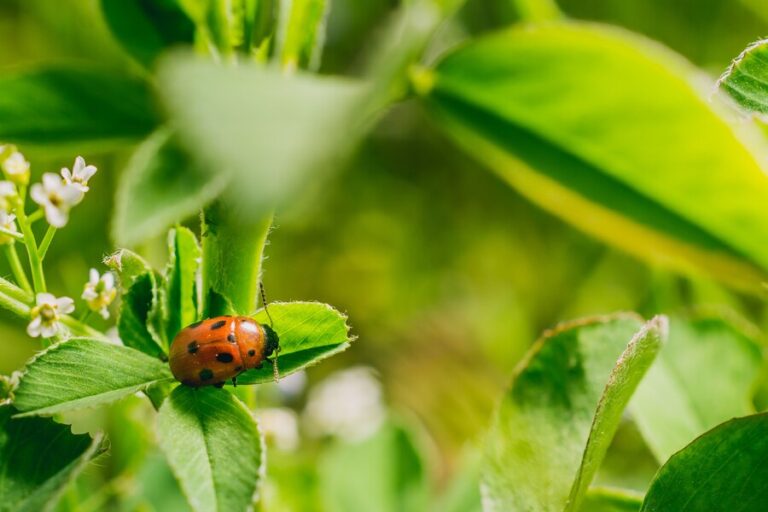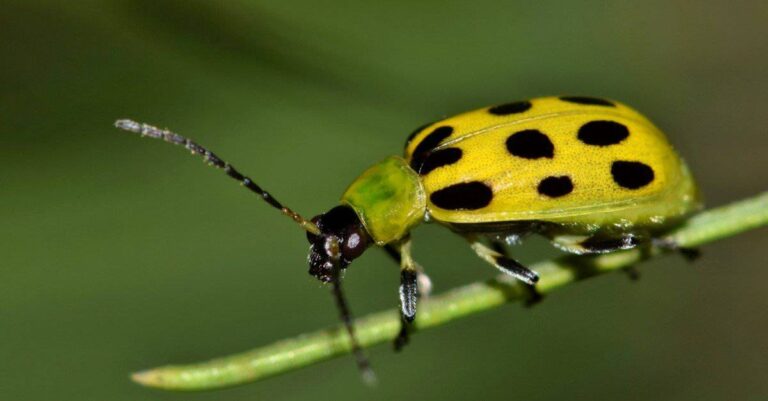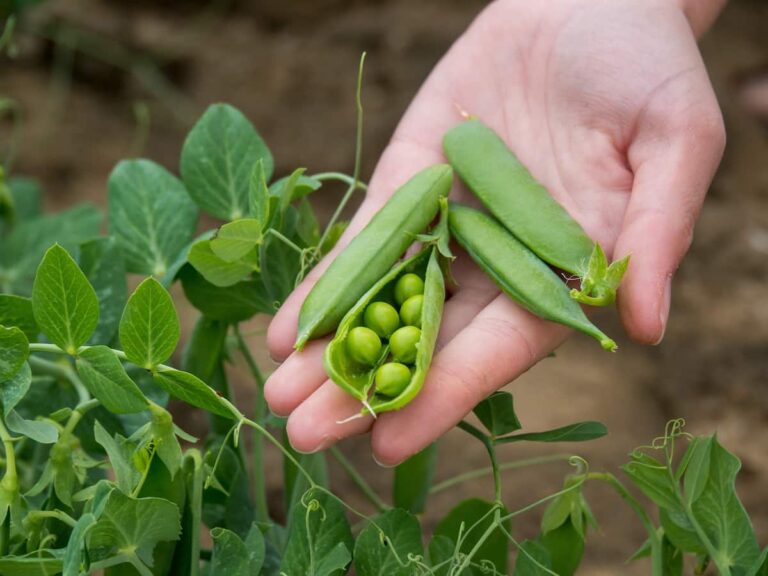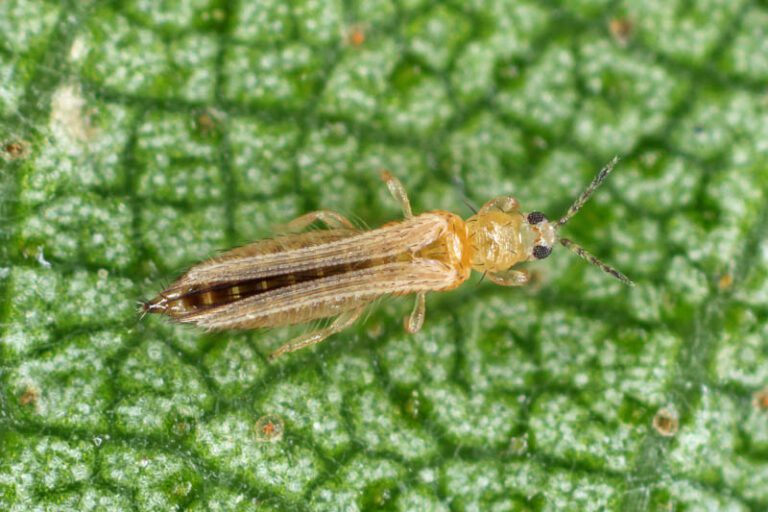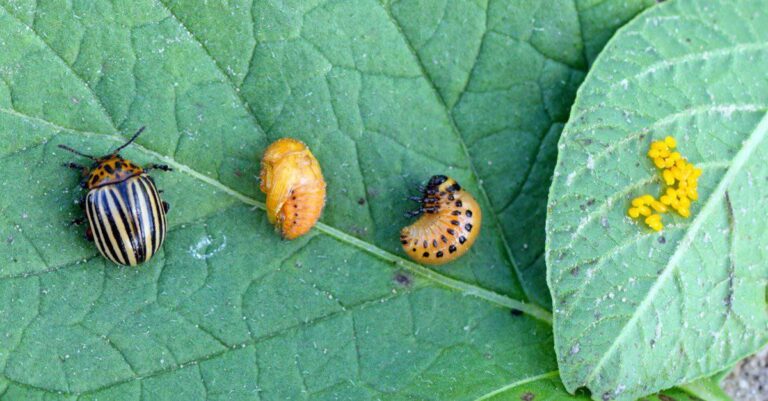How to Get Rid of Cabbage Worms: Effective Methods to Control and Prevent These Caterpillars from Your Plants
Table of Contents
Methods for Controlling and Preventing Cabbage Worms:
Cabbage worms can cause significant damage to your plants if left unchecked. Fortunately, there are several effective methods for controlling and preventing these pests from ruining your cabbage harvest.

One method is implementing proper soil preparation and nutrient management. Cabbage plants that receive adequate nutrients and grow in healthy soil are less susceptible to cabbage worm infestations. Before planting, ensure that your soil is well-drained and rich in organic matter. Test your soil to determine its nutrient content and adjust accordingly, providing the necessary nutrients for optimal cabbage growth. Additionally, consider using organic fertilizers that promote strong, vigorous plants while minimizing the risks of chemical residues.
Another approach to deterring cabbage worm infestations is utilizing crop rotation. By rotating cabbage crops with non-host plants, you can disrupt the life cycle of the pests and reduce their populations. Cabbage worms prefer to lay their eggs on cabbage family plants, so planting members of other plant families in the same area can help discourage their presence. After harvesting cabbage, consider planting crops like beans or tomatoes in the same area to break the cycle and prevent re-infestation.
By employing these methods, you can proactively address cabbage worm infestations and ensure the health and productivity of your cabbage plants. Stay tuned for the next sections of this article, where we will explore more effective strategies to control and prevent cabbage worms.
(Note: The above section is a continuation of an article and does not provide a conclusion.)
1. Understanding the Threat: Identifying Cabbage Worms and Their Damage to Plants
Cabbage worms, also known as imported cabbage worms or diamondback moths, are common pests that can cause significant damage to cabbage and other cruciferous plants. Identifying these pests early on is crucial for effective control and prevention measures.
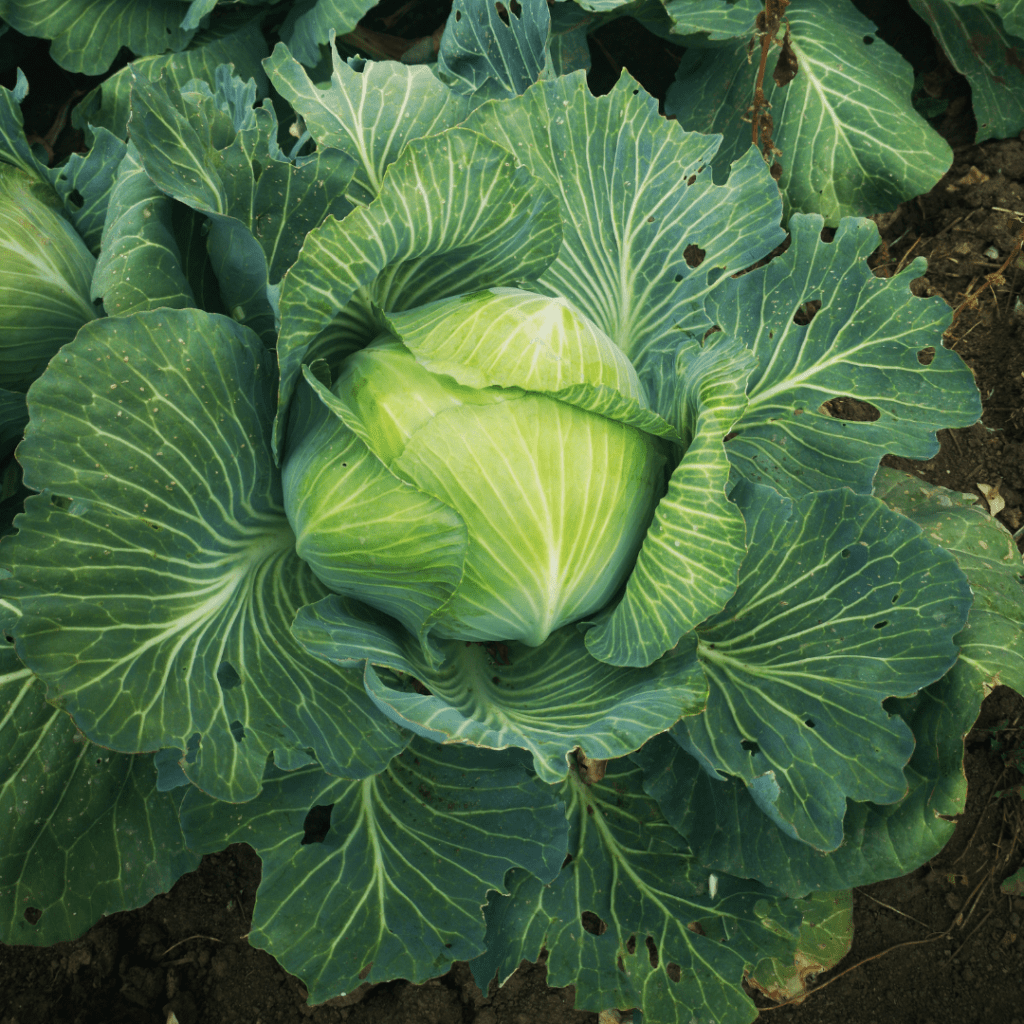
Cabbage worms are small green caterpillars that can reach up to an inch in length. They have a velvety appearance with a lighter stripe running down the center of their back. These worms typically feed on the leaves of cabbage plants, leaving behind irregularly shaped holes and skeletonized foliage. If left untreated, a cabbage worm infestation can result in stunted growth and reduced crop yields.
One of the key indicators of cabbageworm presence is the presence of their eggs. These eggs are typically laid on the undersides of cabbage leaves and appear as tiny yellow oblong structures. As these eggs hatch, the young larvae start feeding on the plant, causing visible damage. It is important to regularly inspect the undersides of your cabbage leaves for the presence of eggs and larvae to catch an infestation early on. By understanding the threat posed by cabbage worms and recognizing the signs of their damage, you can take proactive measures to control and prevent their presence in your garden.
2. Promoting Healthy Plant Growth: Implementing Proper Soil Preparation and Nutrient Management
In order to promote healthy plant growth and mitigate the risk of cabbage worm infestations, proper soil preparation and nutrient management are essential. By ensuring that your soil is well-balanced and enriched with the necessary nutrients, you can create an environment that is less attractive to these pests.
Here is a table for Implementing Proper Soil Preparation And Nutrient Management:
| Soil Preparation | Nutrient Management |
|---|---|
| Test soil to determine nutrient deficiencies and pH levels | Add fertilizers and lime to improve crop plant growth |
| Add compost and manure to soil to increase organic matter content and add plant nutrients | Use cover crops, crop rotation, and other conservation practices |
| Use tillage and cultivation techniques |
One crucial step in soil preparation is conducting a soil test to assess its composition and nutrient content. This analysis will enable you to identify any deficiencies or imbalances and make informed decisions about the appropriate fertilizer or amendments to use. For example, cabbage plants typically require a soil pH between 6.0 and 6.5 and benefit from the addition of organic matter, such as compost or well-rotted manure, to improve soil structure and fertility.
Once you have determined the specific nutrient requirements for cabbage, you can apply fertilizers accordingly. It is important to choose fertilizers that are specifically formulated for vegetable gardens and follow the recommended application rates. To maximize nutrient uptake and reduce the risk of nutrient runoff, it is advisable to apply fertilizers in smaller, more frequent doses throughout the growing season rather than in a single heavy application. Additionally, incorporating organic fertilizers into the soil can help to improve its long-term fertility, as they release nutrients gradually and enhance microbial activity.
When it comes to nutrient management, it is crucial to strike a balance. While plants require an adequate supply of nutrients for optimal growth, excessive application can lead to imbalances, runoff into water bodies, or even harm the plants themselves. Therefore, it is essential to follow the recommended dosage instructions and monitor plant health closely throughout the growing season. By implementing proper soil preparation and nutrient management techniques, you can create an environment that supports healthy plant growth and discourages cabbage worm infestations.
3. Creating a Hostile Environment: Utilizing Crop Rotation to Deter Cabbage Worm Infestations
Crop rotation is a widely recognized and effective method for deterring cabbage worm infestations. By systematically changing the location of crops in your garden each season, you disrupt the life cycle of these pests and diminish their population. Cabbage worms rely on the availability of their favored host plants, such as cabbage, broccoli, and cauliflower, to survive and reproduce. By rotating your crops, you can deny them a constant food source and create a hostile environment that discourages their presence.
The key to successful crop rotation is to follow a carefully planned schedule that takes into account the life cycle and preferences of cabbage worms. Ideally, you should avoid planting cruciferous vegetables in the same location for consecutive years. It is recommended to wait at least two or three years before re-planting these crops in the same spot. In the meantime, you can focus on cultivating other vegetables that are less attractive to cabbage worms, such as tomatoes, peppers, or beans. By implementing this simple yet effective strategy, you can greatly reduce the risk of cabbage worm infestations, promoting healthier plants and a thriving garden.
4. Natural Predators: Attracting Beneficial Insects to Control Cabbage Worm Populations
Natural predators can play a crucial role in controlling cabbageworm populations and reducing their impact on plants. Beneficial insects, such as ladybugs, lacewings, and parasitic wasps, are effective predators that can help keep cabbage worm numbers in check. These insects feed on cabbage worms, both in their larval and adult stages, and can significantly reduce their populations when present in sufficient numbers.
Attracting these beneficial insects to your garden can be achieved through various methods. One approach is to provide them with a suitable habitat, such as planting native flowering plants that produce nectar and pollen. These plants act as a food source for these beneficial insects, attracting them to your garden and encouraging them to stay. Additionally, minimizing the use of pesticides that may harm or deter these predators is essential, as they rely on a healthy ecosystem to thrive.
By understanding the natural enemies of cabbage worms and implementing strategies to attract and support them, gardeners can create a more balanced and sustainable environment in which these predators can help control cabbage worm populations. This approach not only reduces reliance on chemical insecticides but also promotes the overall health and resilience of the garden ecosystem.
5. Physical Barriers: Installing Protective Covers and Netting to Prevent Cabbage Worms
Protecting your cabbage plants from cabbage worms is crucial for maintaining the health and productivity of your garden. One effective method to prevent these pests from inflicting damage is to install physical barriers such as protective covers and netting.
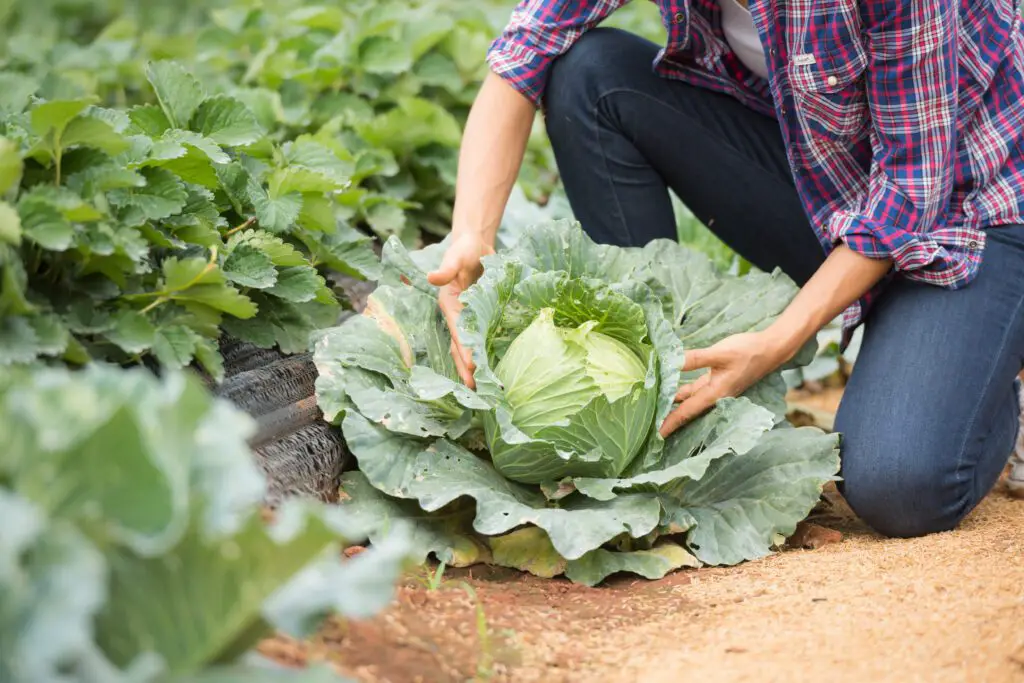
By creating a physical barrier around your cabbage plants, you can effectively block the entry of cabbage worms and other pests. Protective covers made of materials like floating row covers or fine mesh netting are particularly effective in preventing pests from reaching your crops. These covers act as a shield against cabbage worms, protecting your plants from their destructive feeding habits and reducing the risk of infestation.
The key lies in ensuring that the covers or netting are securely installed and properly sealed, leaving no gaps for pests to sneak through. When implementing this method, it is crucial to provide adequate support for the covers, such as hoops or stakes, to prevent them from directly resting on the plants and causing damage. Additionally, regular monitoring of the covers is essential to address any tears or holes promptly, as these could potentially provide entry points for cabbage worms.
6. Handpicking: A Manual Approach to Removing Cabbage Worms from Your Plants
Handpicking is a manual method that can be effective in removing cabbage worms from your plants. By physically inspecting your plants and removing any visible worms, you can help prevent further damage to your cabbage crop. This method is especially useful for smaller gardens or for gardeners who prefer a hands-on approach.
To handpick cabbage worms, simply examine your plants regularly, preferably in the morning when the worms are more active. Look for small green caterpillars, about an inch long, with a pale yellow stripe on their backs. Gently pluck these worms from the leaves and drop them into a bucket of soapy water to ensure they do not return to your plants. Be sure to check both the upper and lower surfaces of the leaves, as well as the heads of your cabbage plants, as these are common areas for cabbage worms to hide.
Although handpicking can be time-consuming, it is an effective method for reducing cabbage worm populations without the use of chemicals. By staying vigilant and consistently removing these pests, you can minimize the damage they cause and ensure the health of your cabbage plants. However, keep in mind that this method may not be suitable for larger gardens or commercial-scale production where more efficient control methods may be necessary.
7. Homemade Remedies: Using Organic Solutions to Repel and Eliminate Cabbage Worms
When it comes to repelling and eliminating cabbage worms, there are several effective homemade remedies that can be used to protect your plants. These organic solutions provide a safe and eco-friendly alternative to chemical pesticides, ensuring the health and well-being of both your garden and the environment.

One such homemade remedy is a mixture of neem oil and water. Neem oil is derived from the neem tree and boasts powerful insect-repelling properties. By diluting neem oil with water according to the manufacturer’s instructions, you can create a spray that can be applied directly to your cabbage plants. This will deter cabbage worms, as well as other pests, from feeding on your crops. Additionally, neem oil has the added benefit of being a natural fungicide, helping to prevent fungal diseases that may also harm your plants.
Another effective homemade solution is a mixture of crushed garlic and water. Garlic contains compounds that act as natural insecticides and deterrents. Simply crush a few cloves of garlic and mix them with water in a spray bottle. Then, generously spray the solution onto your cabbage plants. Not only will this help repel cabbage worms, but it will also discourage other pests from causing damage. It is important to note that this solution should be reapplied after rain or heavy watering to ensure its effectiveness.
By utilizing these organic homemade remedies, you can effectively repel and eliminate cabbage worms from your garden without the use of harmful chemicals. Not only will this protect your plants, but it will also promote a healthy and sustainable gardening environment.
8. Biological Control: Introducing Parasitic Wasps and Nematodes for Cabbage Worm Management
Biological control methods are gaining popularity among gardeners for managing cabbage worm populations. One effective approach involves introducing parasitic wasps and nematodes to help control these pests.
Here is a table for Biological Control: Introducing Parasitic Wasps and Nematodes for Cabbage Worm Management:
| Control Method | Description |
| Parasitic wasps | Natural enemies of cabbage worms that can be used as bio-controls for farmers and growers of oilseed rape and brassica vegetables against cabbage stem flea beetle as part of an integrated pest management approach2. |
| Nematodes | Nematophagous microorganisms, such as fungi and bacteria, can be used to control plant parasite nematodes and feed on them1. |
Parasitic wasps, such as Trichogramma brassicae, are natural enemies of cabbage worms. These tiny beneficial insects lay their eggs inside the eggs of cabbage worms, preventing them from hatching and multiplying. As the wasp larvae develop and feed on the cabbage worm eggs, they effectively eliminate potential future infestations. Nematodes, on the other hand, are microscopic roundworms that parasitize and kill the larvae of cabbage worms in the soil. Together, these biological control agents provide an environmentally friendly and sustainable solution for cabbage worm management.
When introducing parasitic wasps and nematodes into your garden, it is important to follow the recommended guidelines and application methods. Timing is crucial, as it should coincide with the presence of cabbage worm eggs or larvae. Additionally, providing suitable habitat and food sources for these beneficial insects can enhance their effectiveness. By incorporating biological control methods into your gardening practices, you can significantly reduce cabbage worm populations and minimize the need for chemical pesticides.
9. Decoy Plants: Utilizing Trap Crops to Divert Cabbage Worms Away from Your Main Vegetation
Decoy plants, also known as trap crops, can be an effective method of diverting cabbage worms away from your main vegetation. By strategically planting specific crops that are highly attractive to cabbage worms, you can lure them away from your prized cabbage plants. This not only reduces the damage to your main crops but also provides an alternative food source for the worms, keeping them satisfied and away from your desired vegetables.
When selecting trap crops, it is important to choose varieties that are more appealing to cabbage worms than your main vegetables. For instance, members of the Brassica family, such as mustard greens or radishes, are commonly used as decoy plants to attract cabbage worms away from cabbage. These plants possess a similar scent and taste that cabbage worms find irresistible, making them the perfect decoy.
However, it’s crucial to monitor the trap crops regularly and remove any cabbage worms that have been lured to them. This prevents the worms from reproducing on the decoy plants and potentially moving back to your main crop. By effectively utilizing trap crops, you can significantly reduce cabbage worm infestations and preserve the health of your cabbage plants.
10. Companion Planting: Maximizing Natural Pest Repellents by Pairing Compatible Species
Companion planting is a strategy that can greatly enhance the natural pest repellent capabilities of your garden. By pairing compatible plant species, you can create a harmonious environment that naturally deters cabbage worms and other pests. Certain plants produce chemical compounds that repel or disrupt the life cycle of these insects, making them valuable allies in your battle against cabbage worms.
One example of a companion plant that has proven effective in repelling cabbage worms is the aromatic herb, thyme (Thymus vulgaris). Thyme contains compounds such as thymol and carvacrol, which are known to deter many pests, including cabbage worms. By interplanting thyme throughout your cabbage patch, you can help to create an environment that is unappealing to these pests.
Another beneficial companion plant to consider is the classic marigold (Tagetes spp.). Marigolds contain chemical compounds called limonoids that repel a wide range of insects, including cabbage worms. In addition to their natural pest repellent properties, marigolds also attract beneficial insects, such as ladybugs and parasitic wasps, which are natural predators of cabbage worms. By planting marigolds alongside your cabbages, you can maximize the pest control potential of your garden while adding a burst of color to your landscape.
11. Proper Hygiene: Regularly Cleaning and Removing Infested Plant Debris to Prevent Cabbage Worms
Proper hygiene plays a crucial role in preventing cabbage worm infestations and maintaining the health of your plants. Regularly cleaning and removing infested plant debris is essential to create an environment that is inhospitable to these pests. By eliminating potential hiding places, you can diminish their ability to reproduce and thrive in your garden.
Here are some key points on how to prevent cabbage worms:
- Regularly clean your garden and remove any infested plant debris.
- Use floating row covers to protect your plants from adult moths.
- Handpick any visible cabbage worms and destroy them.
- Apply Bacillus thuringiensis (Bt), a natural insecticide, to your plants.
- Introduce natural predators such as parasitic wasps and birds to your garden.
I hope this helps!
One effective method is to carefully inspect your plants on a regular basis and promptly remove any eggs, larvae, or adult cabbage worms that you come across. These pests tend to hide on the undersides of leaves, so be sure to thoroughly examine both sides during your inspections. Additionally, consider removing any damaged or infested leaves and disposing of them properly, either by burning or bagging them for garbage collection.
This way, you can prevent the spread of cabbage worms to other plants and minimize the risk of future infestations. By practicing proper hygiene and consistently removing infested plant debris, you can greatly reduce the presence of cabbage worms in your garden and maintain the health and productivity of your cabbage plants.
12. Organic Pesticides: Using Safe and Approved Spr
Organic pesticides can be a valuable tool in the fight against cabbage worms, providing a safe and effective solution for gardeners who prefer to avoid synthetic chemicals. When selecting organic pesticides, it is crucial to choose products that are both safe and approved for use in your area. This ensures that you are using effective products that have undergone rigorous testing and meet the necessary standards for organic gardening.
To know more about Organic Ways to Control Pests watch the video!
One popular organic pesticide for cabbage worms is Bacillus thuringiensis (Bt). Bt is a naturally occurring bacteria that produces proteins toxic to certain pests, including cabbage worms. When ingested by the worms, Bt disrupts their digestive systems, eventually leading to their demise. This targeted approach minimizes harm to beneficial insects and other organisms in your garden. It is important to follow the manufacturer’s instructions carefully when using Bt and to reapply it as needed, especially after heavy rainfall.
Another effective organic pesticide is spinosad, which is derived from a naturally occurring soil bacterium. Spinosad works by targeting the nervous systems of insects, causing paralysis and ultimately death. This pesticide is considered safe for use in organic gardening, with minimal impact on beneficial insects like bees and butterflies. As with any pesticide, it is crucial to follow the instructions on the label and take necessary precautions to protect yourself and the environment.
Using safe and approved organic pesticides can be an important component of a comprehensive cabbage worm management strategy. However, it is essential to remember that pesticides should always be used as a last resort and in combination with other control methods to minimize environmental impact and promote long-term garden health.
What are organic pesticides?
Organic pesticides are substances derived from natural sources that are used to control pests while minimizing harm to the environment and human health.
Are organic pesticides safe to use?
Yes, organic pesticides are considered safe because they are made from natural ingredients and do not contain harmful chemicals.
How do organic pesticides work?
Organic pesticides work by targeting specific pests and disrupting their life cycles or causing physical harm. They can repel, deter, or kill pests without posing significant risks to other beneficial organisms.
Can organic pesticides be used for all types of pests?
Organic pesticides are effective against a wide range of pests, including insects, fungi, and weeds. However, their efficacy may vary depending on the specific pest and the product used.
Where can I find organic pesticides?
Organic pesticides can be found in gardening stores, organic farms, and online retailers specializing in organic gardening supplies.
How do I apply organic pesticides?
Follow the instructions provided by the manufacturer for proper application of organic pesticides. This may include diluting the product, using a sprayer or other application methods, and applying at the recommended time.
Can organic pesticides harm beneficial insects?
While organic pesticides are generally safer for beneficial insects compared to synthetic pesticides, some products may still have an impact. It is important to choose organic pesticides that specifically target the pests you want to control while minimizing harm to beneficial insects.
Are organic pesticides approved for use in organic farming?
Yes, organic pesticides that meet the standards set by organic certifying bodies are approved for use in organic farming.
Can organic pesticides be used in combination with other pest control methods?
Yes, organic pesticides can be used in combination with other pest control methods such as crop rotation, biological control, and physical barriers for more effective pest management.
Do organic pesticides have any residual effects on crops?
Organic pesticides generally have low residual effects compared to synthetic pesticides. However, it is still important to follow the recommended waiting period between pesticide application and harvest to ensure food safety.
Do organic pesticides require any special storage or handling?
It is always important to store pesticides, including organic ones, in their original containers, away from children and pets. Follow the instructions provided by the manufacturer for specific storage and handling guidelines.

